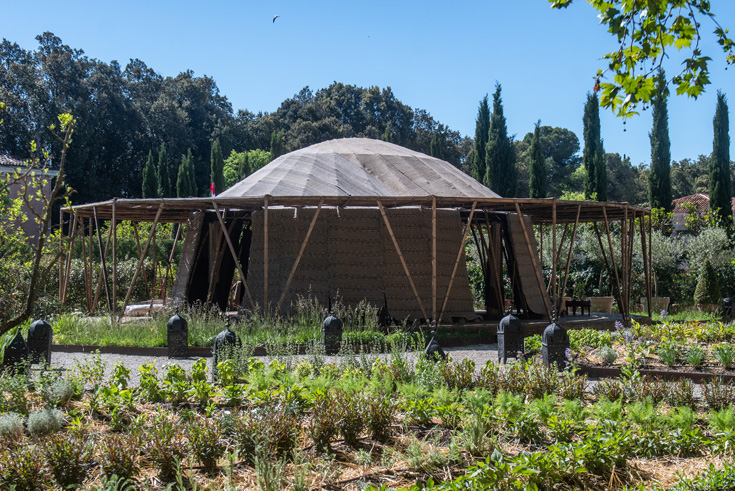The Majlis – A Bamboo Tent as a Forum for the Preservation of Traditional Crafts

“I’m not a bamboo architect. I also like working with concrete and steel,” Simón Vélez clarified at the opening of The Majlis (see video at the end of this post). He is one of very few great masters to be represented again at this Biennale in Architecture. Naturally, he owes his international reputation entirely to his bamboo constructions. The paradigm shift in architecture can perhaps be most clearly discerned from his personality. While the star architects whose glazed skyscrapers in every conceivable geometry are taking over the world are increasingly seldom invited to international exhibitions, it is unimaginable that Simón Vélez and his architectural position would not appear at any future-oriented event. “We don’t build museums or showpieces, but rather just things that people need in their lives.” In Venice, this includes a chicken coop − of bamboo, of course. Vélez is the personification of ecological sustainability and stands for social commitment. The fact that he comes from Colombia frees him from any accusation of post-colonialism. What is much more important than fashionable political correctness is that Simón Vélez has remained true to himself for decades. The pioneer of contemporary bamboo building is, and will continue to be, one of the most prominent ambassadors or building with naturally renewable materials.
The globally active Caravane Earth organization invited him to this year’s Biennale. The international foundation stands for sustainable, ethical business practices and promotes art, crafts, architecture, agriculture and education. The Biennale contribution from curator Thierry Morel (statement Min. 03:15) is correspondingly holistic: in the courtyard of the Abbazzia di San Giorgio Maggiore, landscape architect Todd Longstaffe-Gowan (18:33) has put in a medieval vegetable garden featuring plants long consigned to oblivion. The garden also pays homage to the role played by Venice in the Middle Ages: the city was a European gateway for a great variety of products and seeds from Asia. The garden is a gift to the church and will be preserved once the Biennale has come to an end.
In contrast, the nomads’ tent by Simón Vélez (10:41) and Stefana Simic (08:18) is lightweight and easily stored away. After the Biennale, it will be set up in Doha. The supporting structure is prefabricated of bamboo cane connected with stainless-steel screws. The textile covering was woven with a traditional technique by women from the Ain Leuh cooperative and the Boujad tribe in Morocco.
Video of the opening with statements from the curator, the architects and the landscape architect:
Further Information:
Curator: Thierry Morel
Landscape architects: Todd Longstaffe-Gowan


